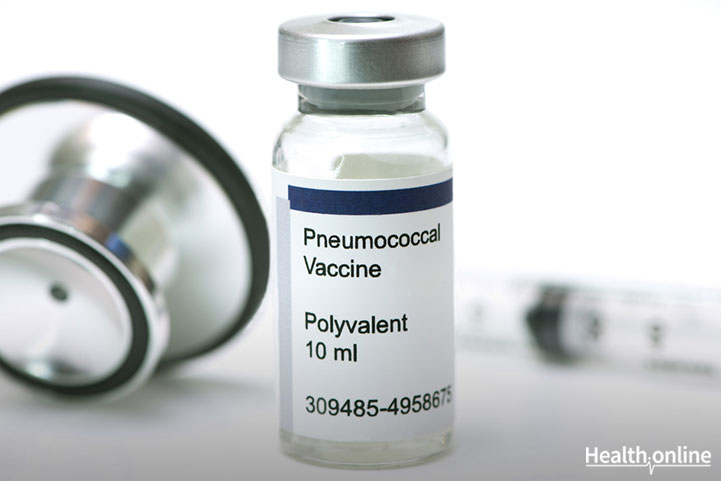
Pneumonia Vaccine
Rationale
Pneumonia is a deadly disease that can kill you if you are not correctly managed or if the treatment is started too late. The reason it is deadly is due to the accumulation of fluids in your lungs. If so much of the lung space is occupied with fluid you cannot breathe and you will die from lack of oxygen—in effect from suffocation or from drowning. Thus, vaccination for this disease is very important.
Generic and brand names
The generic name of this vaccine is the Pneumococcal vaccine, polyvalent. Commercial name is Pneumovax 23, or Pneumo 23.
Composition of the vaccine
A typical vaccine for pneumonia consists of a mixture of highly purified capsular polysaccharides from the 23 most prevalent or invasive pneumococcal types.
Streptococcus pneumoniae , including the six serotypes that most frequently cause invasive drug-resistant pneumococcal infections. If you have received this vaccine, you are protected from 85 to 90% of all causes of pneumonia. Putting it in another way, the chance and possibility that you will get pneumonia is only 10 to 15%. That is a significant protection from contracting the disease!
Mechanism of action
The purified pneumococcal capsular polysaccharide that is incorporated in the vaccine induces the production of antibodies in your body, which are very effective in preventing pneumococcal disease. Clinical studies have demonstrated the immunogenicity of each of the 23 capsular types when tested in polyvalent vaccines.
Schedule of administration
You could be given with this vaccine at any time for as long as you are not having fever and you are not sick with any infectious disease. Once you have received this vaccination, revaccination is not routinely recommended. If ever you will be revaccinated for a particular reason as approved and recommended by your medical doctor, at least five years have passed since your last vaccination. However, if you are an elderly person, aged 65 years or over, who has been observed to have frequent infections in spite of previous vaccination, you can be revaccinated once five years have passed since your last, depending on the assessment, evaluation, and recommendation of your medical doctor.
Indications and usage
This vaccine is recommended for usage by the following groups of prospective users:
Immunocompetent persons:
- Routine vaccination for persons 50 years of age or older
- Persons aged 2 years or older with chronic cardiovascular disease (including congestive heart failure and cardiomyopathies), chronic pulmonary disease (including chronic obstructive pulmonary disease and emphysema), or diabetes mellitus
- Persons aged 2 years or older with alcoholism, chronic liver disease (including cirrhosis) or cerebrospinal fluid leaks
- Persons aged 2 years or older with functional or anatomic asplenia (including sickle cell disease and splenectomy)
- Persons aged 2 years or older living in special environments or social settings
Immunocompromised persons:
Persons aged 2 years or older, including those with HIV infection, leukemia, lymphoma, Hodgkin’s disease, multiple myeloma, generalized malignancy, chronic renal failure or nephrotic syndrome; those receiving immunosuppressive chemotherapy (including corticosteroids); and those who have received an organ or bone marrow transplant.
Precautions
Caution and appropriate care should be exercised in administering this vaccine to individuals with severely compromised cardiovascular and/or pulmonary function in whom a systemic reaction would pose a significant risk.
It is not known whether this vaccine can cause harm to the fetus when administered to a pregnant woman or can affect reproductive capacity. This vaccine should be given to pregnant women only if clearly needed.
It is not known whether this vaccine is excreted in human milk. Thus, caution should be exercised when this vaccine is administered to a nursing mother.
Side effects
The most common adverse experiences reported in clinical trials were fever, injection site reactions including soreness, erythema, warmth, swelling, and local induration.
Other adverse experiences reported in clinical trials and/or in post-marketing experience include:
- Body as a whole
- Cellulitis, asthenia, fever, chills, malaise
- Digestive system
- Nausea, vomiting
- Hematologic/Lymphatic system
- Lymphadenitis, lymphadenopathy, thrombocytopenia in patients with stabilized idiopathic thrombocytopenic purpura, haemolytic anemia in patients who have had other hematologic disorders, leukocytosis
- Hypersensitivity reactions
- Anaphylactoid reactions, serum sickness, angioneurotic edema
- Musculoskeletal system
- Arthralgia, arthritis, myalgia
- Nervous system
- Headache, paresthesia, radiculoneuropathy, Guillain-Barre syndrome, febrile convulsion
- Skin
- Rash, urticaria
Dosage and mode of administration
This vaccine is administered either by intramuscular or subcutaneous injection. It means that it could be injected into your muscle or under your skin. To prevent the occurrence of anaphylactic (allergic) reaction, which could be fatal, this vaccine is not given via the intravenous route—that is, it is not given directly to your blood vessel. A single 0.5 ml dose of the vaccine is injected to you whenever you are scheduled to receive it.




